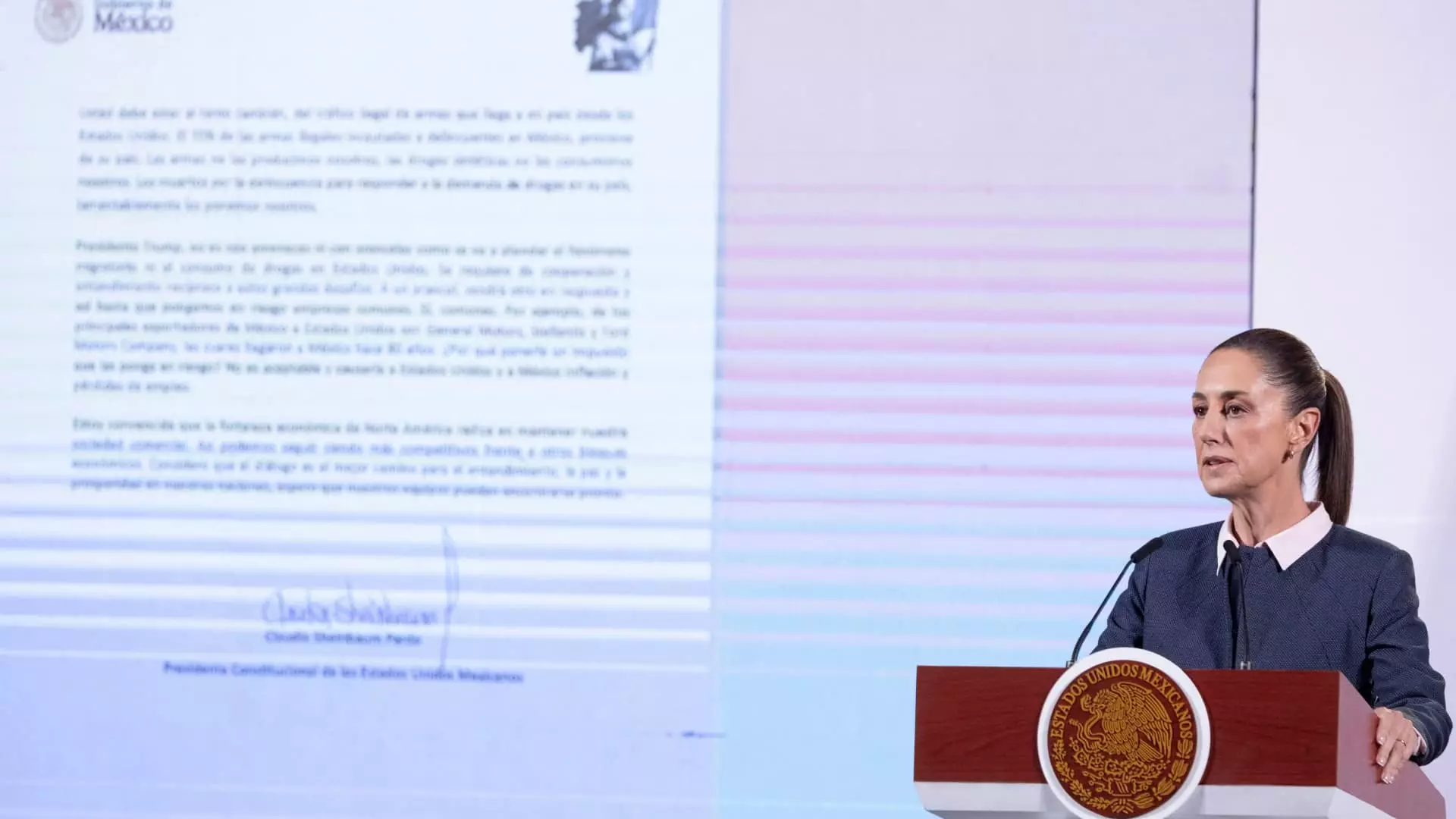The prospect of a significant trading rift between Mexico and the United States has escalated with the election of Donald Trump as President. President Claudia Sheinbaum’s declarations regarding potential retaliatory tariffs reflect the high-stakes nature of this situation. A proposed 25% tariff on Mexican exports threatens not only economic upheaval in Mexico but could also lead to extensive repercussions in the U.S. job market and consumer prices. This looming threat serves as a stark reminder of how global trade can be manipulated as a tool for political leverage, thus inciting fears of an economic standoff that could have severe ramifications on both sides of the border.
Sheinbaum’s warning of retaliation signals readiness on Mexico’s part to protect its interests. Economic Minister Marcelo Ebrard characterized the proposed tariffs as “a shot in the foot.” Such rhetoric indicates Mexico’s determination to combat any measures that could undermine their economy, especially in a region that is critically integrated, economically and socially. When examining these comments, one cannot help but reflect on the interconnected nature of Nafta and its successor, the USMCA, which underscores the complexity of trade relations in North America.
The potential fallout from the implementation of tariffs is multifaceted, affecting job security in both nations. Ebrard highlighted that the toll on the U.S. workforce could reach 400,000 jobs. This statistic underscores a crucial point; the repercussions of trade policy are rarely limited to one country alone. In fact, the threat could ripple through various sectors, notably the automotive industry—one of the most significant contributors to both the Mexican and U.S. economies.
The automotive sector, particularly reliant on cross-border production, stands to be directly affected by these trade tensions. Ebrard noted that a staggering 88% of pickup trucks sold in the U.S. are produced in Mexico, hinting at the deeper impact that a tariff could wield on American consumers. A projected price increase of $3,000 per vehicle is not just a number; it represents a tangible burden on families in rural regions that largely supported Trump during the elections.
Moreover, these tariffs could effectively dismantle the profits generated by major automakers. According to analysts at Barclays, the introduction of a blanket tariff could jeopardize the financial stability of Detroit’s leading car manufacturers, emphasizing how interconnected the manufacturing landscape is within North America.
In addition to trade issues, the conversation between Sheinbaum and Trump also turned to migration policy. Trump’s insistence on controlling the flow of migrants into the United States echoes his administration’s broader immigration strategy. These discussions prompted Sheinbaum to articulate Mexico’s emphasis on “building bridges” rather than “closing borders.” This philosophical divergence illuminates the challenges ahead, as both leaders grapple with complex socio-economic factors that extend far beyond mere trade discussions.
Indeed, it raises critical questions regarding how both nations will navigate the intertwined themes of migration and commerce. As tariffs loom large, Mexico’s efforts to maintain a bilateral relationship that fosters cooperation are crucial. The existence of a clear migration strategy further illustrates how trade disputes cannot be separated from wider immigration debates, making negotiations increasingly challenging.
As the USMCA prepares for review in 2026, analysts anticipate a rigorous renegotiation rather than a mere extension of the current agreement. Katia Goya’s commentary points towards a more fractious relationship between the member countries, where tariffs could function as a barrier rather than a vehicle for mutual growth. The looming specter of increased protectionism threatens to undermine the open trade philosophies that initially brought Mexico, the U.S., and Canada together.
With U.S. corporations increasingly voicing concerns over protectionist policies, the economic landscape is fraught with uncertainty. The Institute of International Finance has cautioned that escalating trade tensions may yield dire consequences, including detrimental impacts on exchange rates and commodity prices. Such potential chaos in global markets embodies the critical need to prioritize collaboration over conflict.
The complex interplay of trade, migration, and economic policy between Mexico and the United States has entered a perilous phase. The implications of Trump’s proposed tariffs are vast, signaling a potential breakdown in a longstanding partnership that has proven mutually beneficial in the past. As both nations stand at a crossroads, the choices made in the coming months will not only define their bilateral relations but could also reshape the economic futures of millions on both sides of the border. It remains crucial for leaders to prioritize dialogue and mutually beneficial strategies over adversarial posturing to avert a slippery slope into an all-out trade war.

Leave a Reply